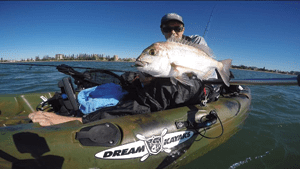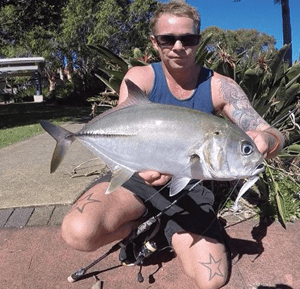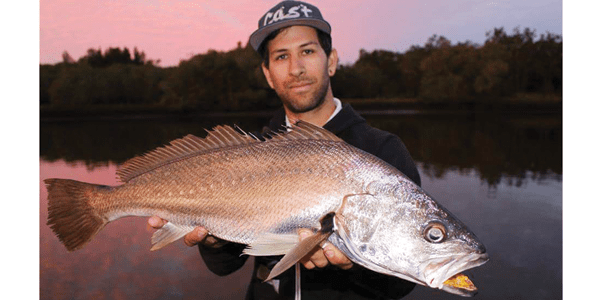Quite a few reports have come through of snapper being landed in and around smaller reef structures holding bait.
Some marks have taken less than six minutes for kayak fishers to reach from the Mooloolah River mouth.
These marks are sometimes hard to find by boat because of the speed being travelled.
What looks like a small spike on the sounder of a boat is seen quite differently by someone on a kayak travelling at paddle speed.
Kayak fishers have reported great catches of reef species on these marks, with floating baits (live and dead), plastics, micro jigs and trolled hard-bodies producing results. It seems there is more than one way to skin a snapper at this time of year.
Out on the wider reef marks, some really good-quality snapper are being boated by the local charter operators, as are parrot, pearl perch, grass sweetlip and cobia. Murphys Reef is still fishing quite well and of course the Noosa reefs are too. A few excellent spanish mackerel are getting about offshore from Noosa, so we will see how much longer they hang around.
The local beaches have started to fire with the usual run of bream at this time of year and the reports of solid sea bream in the gutters along the Kawana stretch are getting better and better. For those new to beach fishing on the coast, one tip I can offer for rig selection is using a paternoster-style rig with two droppers leading to a swivel clip and star sinker.


The swivel clip is important to allow the star sinker to spin on retrieval, helping to prevent line twist.
For hook selection, try ganging two Mustad 540 bronze size 1 or 1/0 hooks together with a swivel and present strip baits from pilchards, bonito or slimy mackerel. I have found this type of presentation works well for bream.
The slower drift and keeping the bait looking natural allows you to systematically fish a gutter or gutters section by section, helping you locate where the fish are holding during the tidal movements. Some solid fish are being retrieved by fishers in the Caloundra to Noosa rivers, creeks and lakes.
A number of trevally are getting about despite colder water temperatures, and the best spots for golden and giant trevally have been around Woods Bays at Noosa. A few bigeye trevally have been captured around the local Kawana lakes and Currimundi Lake.
Bream are being taken in good numbers in the deeper holes of the Maroochy River at night from Picnic Point right up to the Bli Bli islands. The Mooloolah River is seeing some really solid breeder bream around the moorings and under the boats.
On the high tide, bream are holding around the motorway bridge and further up around the Mountain Creek bridges as well. The Mountain Creek lakes have fished well for those using live bait.
Flathead have been quite active on the run-out tide in Currimundi Lake and the Pumicestone Passage and a few solid lizards are also being hooked from the Twin Waters weir area on the receding tide.
Jewfish are being taken from the Noosa River mouth at night.
Ewen Maddock Dam has seen some good bass schooling in the deeper water and local kayakers have successfully used micro jigs to boat them. Matching the size of your lure to the size of the baitfish in the lake is key.
Commonly the baitfish are 40-60mm in length, meaning it’s relatively easy to hit the spot with lure selection. Allow for plenty of flutter time with the micro jigs, lifting only when the jig has bottomed out. Look for bites transmitted as movement in the line or an increasing descent speed.
If you want to find out more about micro jigging inshore or offshore, call into your local Tackle World, where the staff will be happy to answer any questions you may have. That’s all from me.
Until next month, enjoy!
 Bush 'n Beach Fishing Magazine Location reports & tips for fishing, boating, camping, kayaking, 4WDing in Queensland and Northern NSW
Bush 'n Beach Fishing Magazine Location reports & tips for fishing, boating, camping, kayaking, 4WDing in Queensland and Northern NSW








